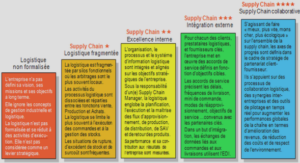As mentioned before, reactive particles in a plasma can be utilized in several ways to modify the surface properties of various materials. In superhydrophobic applications, two major surface characteristics are of outmost importance: (1) surface chemical composition and (2) surface topography. In this regard, plasma surface treatment methods have gained a lot of interest due to their capability of imparting the two characteristics simultaneously. In this section, plasma surface treatment methods are divided into four categories. Etching is primarily used for surface roughening, but it can also alter the chemical composition of the surface. On the other hand, sputtering and polymerization are mainly used for deposition of thin films of hydrophobic materials, but by carefully adjusting the plasma parameters these films can be roughened to some degree. In the final part of this section, the physical interactions between an electrical arc and the surface will be discussed. To the best of our knowledge, arc treatment is not a common method for development of superhydrophobic surfaces. However, since this process has been extensively used in this study, a brief review of the literature will be presented.
PLASMA ETCHING
Plasma etching is the process of selective physical or chemical removal of materials from a surface by reactive plasma radicals. Certain plasma particles react with certain atoms [126] or certain phases [31] on the surface and reaction products are ejected from the surface as gaseous or atomic compounds. For example, oxygen plasma is mainly used in etching of organic materials, where oxygen reacts with carbon and hydrogen and produces gaseous carbon dioxide, carbon monoxide and water [126].
In etching processes, a photo-resistant mask can be used to protect parts of the surface from exposure to the etching medium [126]. Since this process is mostly governed by particle collisions, plasma etching is typically done in low-pressure plasmas. In conventional or wet etching methods, various chemical reactions are utilized to selectively remove the materials exposed to the solvent. However, wet etching has several disadvantages compared to plasma etching. Unlike plasma etching, wet etching can be problematic for roughening of thin films. Besides, solvents or the product solutions may be environmentally hazardous, and should be safely disposed according to numerous standards and regulations which will in turn increases the operation costs [101,126]. Plasma etching on the other hand, is a dry and precise technique without the serious limitations of conventional etching methods [126].
Plasma etching is based on selective erosion. Usually one phase or compound reacts more readily with plasma gas and therefore, etching rate is different at various locations on the surface. If the coating is completely uniform, i.e. the erosion rate is similar for all locations, a photo-resistant mask may be used to cover some and expose other locations. It has been shown that the same effect can be achieved by deposition of photo-resistant micro or nano-structures prior to etching. For instance, polystyrene (PS) micro-beads have been deposited on a glass substrate through various chemical techniques prior to plasma etching with oxygen plasma [127,128]. Oxygen erodes the glass phase more readily, leading to a roughened structure with valleys in between the beads. PS beads may be washed away later with a solvent, fully exposing the micro roughness structure on the glass.
The most common application of plasma etching in development of superhydrophobic surfaces is to generate a micro/nano scale roughness on the surface. This roughened structure may be used as a substrate for further deposition steps [129,130]. For this purpose, oxygen plasma is of significant importance since it can be used to efficiently remove organic functions from the surface. Several studies have reported successful etching of surface structures on various organic compounds such as polycarbonate, poly(ethylene tetraphalate), polypolyurethane, poly(propylene) and cellulose paper using oxygen plasma etching . It has been shown that by adjusting various plasma parameters, such as treatment time, gas pressure, gas composition and plasma power, surface topography can be essentially adjusted to a significant degre .
Plasma etching can also be used as an stand-alone treatment procedure to develop roughness on low-surface-energy materials, thus improving their hydrophobic behavior. In this case, PTFE as a substrate is of great interest, since it is a common hydrophobic material which can be easily eroded by oxygen plasma [133–135]. It has been shown that oxygen uptake on the PTFE surface during the treatment process with sufficiently high plasma power is almost nonexistent even after 3 hours treatment time, and thus the amount of polar oxide hydrophilic groups deposited by oxygen plasma etching is negligible On the other hand, nitrogen or argon plasmas have proved to be ineffective at best in etching of PTFE .
In some cases of plasma etching, fluorine-based gases can be used for simultaneous roughening and functionalization of the surface structure. Fluorine based groups deposited on the surface during plasma treatment can further decrease the surface energy, thus improving surface hydrophobic behavior. Technically, such process is different from polymerization in the sense that it involves covalently binding plasma species to the surface, rather than physical deposition of hydrophobic materials [138]. For instance, one of the most common gasses for simultaneous etching and functionalization is tetrafluoromethane (CF4), which is considered to be an etching gas since it does not readily polymerize on the surface [51,128,130]. However, a significant amount of fluorocarbonic groups are typically observed on samples etched with CF4 which can contribute to the surface hydrophobic behavior .
Chapter 1 Introduction |






